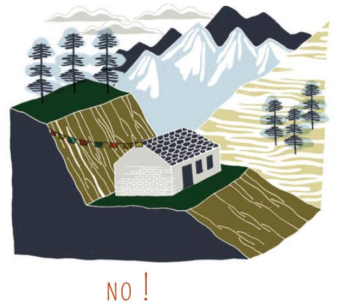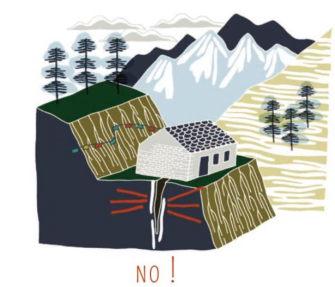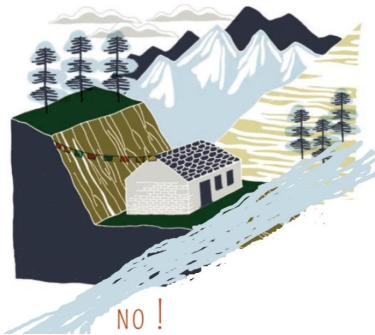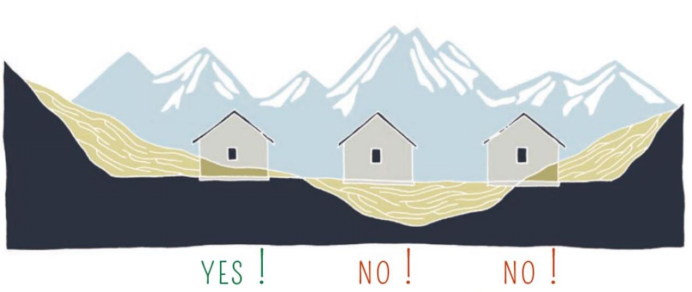Earthquake Science | How to choose the location of housing in the mountains is safe?
Author:Sichuan Earthquake Administrat Time:2022.09.09
How to choose a house in the mountains to reduce the risk of earthquake damage?
1. The house cannot be built under the cliff. If it is a thunderstorm, the earthquake triggers related geological disasters, and the stones that are blowing through the mountains all year round are loosened, and the possibility of house damage and personnel injury is extremely high.

2. Do not build a house on the fault. There is an old saying in rural areas, "The building does not fall off, and there is no three generations." If it is converted into a geological term, it is a fault. When building a house, do not special frequently in the crustal movement, and the area where the faults appear areas. Because of the fault movement, the house is easily stretched by the crustal movement. The stability and integrity of its house structure built across the fault will be greatly affected by the earthquake, and it is extremely prone to collapse.

3. Do not build a house under the stack. In encountering geological disasters, if the earthquake causes the landslide, the rolling rocks will be a deadly source of danger.

4. Avoid the areas below the water level line, and do not approach the streams, rivers, and lakes. If you feel that the house is built beside the water source, on the side of the water, the heart is refreshing, and the feeling of the wise man is happy, but this approach is beautiful but dangerous, and it does not meet the safety norms. When the water level is too high, the foundation is humid. Not only is the body's body easily humid, it is harmful to human health, but also danger of collapse. Once an earthquake occurs, the water level line may be significantly changed due to the significant changes in geological activities. Area.

But remember that if you happen to be at the water, remember to transfer to the high terrain as soon as possible to prevent the attack of the secondary flood.
5. The foundation must be solid, and the house must not be built on the unreal land conditions such as floating soil and sand. Earth loosening is not good for shockproof. Soft texture, mixed sand and gravel are not suitable for building houses. When building a house, it is best to erase the soft surface soil, and then cover the house directly on the strong base rock.

Here we have to mention a superb earthquake secondary disaster: sand liquefaction.
Under the action of earthquakes or other vibration loads, the liquefaction of sand is originally a solid soil becoming liquid or a sticky liquid. Sandy liquefaction mainly appears in the distribution depth, saturated loose fine sand, powder soil sand or clay, and its bottom drainage is poor. Usually under the repeated shock (such as earthquakes), the loose soil is compressed and the internal gap is reduced, which causes the water pressure in the gap to rise. When the water pressure rises to the external pressure that is suffered from the soil, the water cannot be added with water. Excessary from the ground will produce sand liquefaction.

The liquefied phenomenon of sand and soil caused by earthquakes will cause large -scale damage to buildings and urban infrastructure. The entire site will be unstable. Imagine that the land under the feet becomes a place like a swamp, and there will be trap from time to time. The danger of going down, how can the house in such an environment be safe and sound?
references:
Manual for post-emphquake reBuilding in next nepalese valleys
Source: Zhenzhi Zhuojian
- END -
Shandong Unicom hosted the China Computing Power Conference to calculate the digital transformation sub -forum

Luwang, July 30th, on the morning of July 29, the 2022 China Computing Power Confe...
The masses are important!

Save people!8:50 on July 4thYunxi detention site in Shilifeng Prison in Zhejiang P...